5 Procurement Audit Challenges to Overcome


Through regular procurement audits, you ensure that your procurement processes are optimized to the fullest extent, that fraud and non-compliance are minimized, and that resources are utilized efficiently.
However, it’s undeniable that procurement audits come with their fair share of challenges.
The complexity of procurement processes alone is daunting.
Not to mention the data analysis required for a comprehensive audit. And what about when that data is dispersed across systems and confined in silos?
We know that you’re well aware of these challenges, and it’s perfectly natural to feel apprehensive as procurement audits approach.
But this is precisely why we decided to write this article:
To pinpoint the challenges and, most importantly, to show you how you can overcome them.
Join us, and let us give you peace of mind that procurement audit challenges are entirely surmountable.
With a myriad of steps involved in acquiring goods and services for organizations, procurement processes are undeniably complex.
From supplier selection, contract negotiation, and purchase order creation, to receipt of goods, invoicing, and payments.
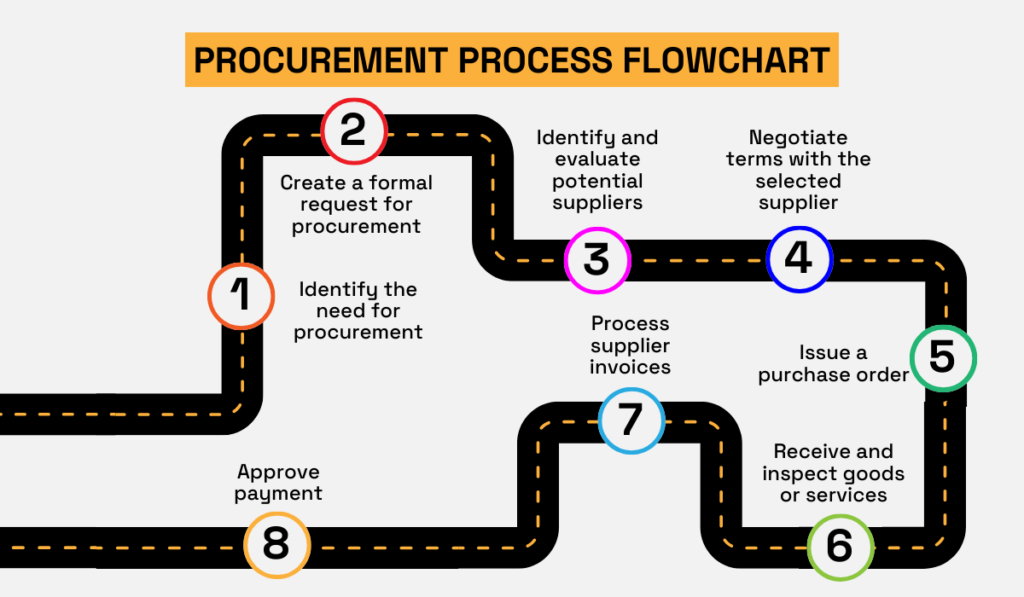
Source: Veridion
It’s a whirlwind of activity involving a variety of stakeholders, documentation, approvals, and compliance requirements, making auditing these processes no easy feat.
You have to coordinate schedules, gather documents, and wrangle cooperation from everyone involved. It’s enough to make anyone’s head spin.
Furthermore, varying regulatory frameworks add another layer of complexity, requiring auditors to have a comprehensive understanding of relevant regulations across different regions.
Then, evaluating the financial stability and reputation of a large number of vendors can be resource-intensive and further complicate matters.
Since there are many steps and processes in procurement, there is also a vast amount of data to gather and analyze.
All these complexities can make it challenging for auditors to effectively assess procurement processes, identify all possible risks, and provide meaningful recommendations for improvement.
Now, we can tell you not to worry.
An auditor who deeply understands the procurement process, principles, industry practices, and relevant regulations will be able to conduct procurement audits regardless.
And yes, this is—or should be—correct.
However, there are strategies to simplify procurement processes and thus make audits more manageable, too.
For instance, implementing procurement automation tools and robust procurement management software is one such strategy.
Such tools provide a centralized platform to streamline and automate various procurement activities.

Source: Coupa
And when the processes like generating purchase orders, sending out RFIs and RFQs, contract management, and invoicing are all automated, this not only streamlines them, but also generates data, which can then be shared with auditors.
In other words, both procurement teams and selected auditors can:
Another solution to overcoming the problem of complex procurement processes is to clearly define the priorities of your audits.
In other words, you should meet with stakeholders like procurement staff and your finance and legal teams before starting an audit to discuss the challenges and risks.
Based on the insights you gather, you can then identify key areas of concern within procurement processes and define the scope of the audit, as well as objectives.
This way, you can focus only on the procurement processes that fall into the scope of this specific audit.
This also enables you to deliver targeted recommendations for improvement tailored to the specific areas identified as priorities by stakeholders.
So, it’s a win-win for everyone involved!
That is—if stakeholders aren’t resistant to procurement audits, which brings us to the second challenge we will talk about today.
Have you ever felt like you’re pushing against a brick wall when it comes to procurement audits?
Well, you’re not alone.
Resistance—especially from procurement staff and department heads—can throw a serious spanner in the works.
Why the resistance, you ask?
First off, there’s the fear that audits will take up precious time and resources, disrupting already jam-packed schedules.
Then, there’s the worry that audits will shine a big spotlight on inefficiencies, leading to finger-pointing and criticism.
And let’s not forget about bias, which can muddy the waters even further.
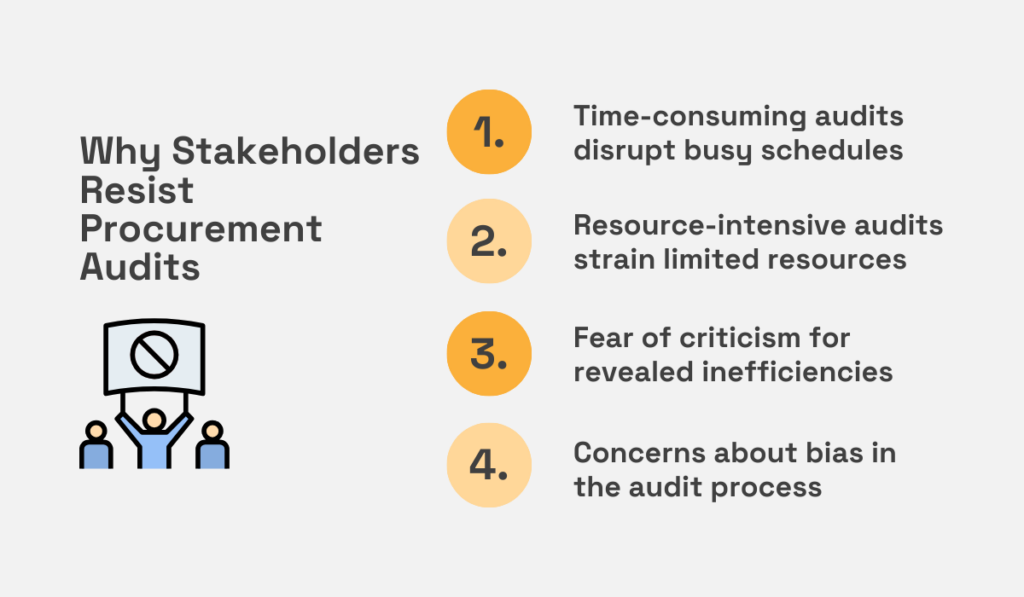
Source: Veridion
However, it’s crucial to understand that stakeholder resistance is not just a minor inconvenience.
It could be a red flag for something more serious, such as foul play. This makes it even more important to conduct an audit as soon as possible.
Need proof?
Just look at this example: during an internal audit led by a Chief Audit Executive (CAE), the procurement department put up a solid wall of resistance.
Why?
Because the new procurement director instructed them to do so:

Source: Richard Chambers
So, despite the CAE’s best efforts, they hit a brick wall when it came to cooperation and transparency.
And guess what?
The discovery of serious procurement policy violations done by that same procurement director proved that stakeholder resistance isn’t just a minor inconvenience—it’s a major roadblock.
So, how do you turn the tide and get stakeholders on board?
It’s all about effective communication and stakeholder engagement.
Start by getting stakeholders involved from the get-go.
Sit down with them and hash out the objectives of the procurement audit together.
Make it crystal clear how the audit results can benefit them personally.
Explain that their purpose is to help them solve issues and mitigate risks they are facing, rather than pinpoint what they are doing wrong.
Also, make sure to explain to the stakeholders that the tools they may already be using anyway (such as procurement software and data analytics tools) can speed up auditing and not waste any additional time.
And if all else fails, don’t be afraid to bring in the big guns.
As Wadad Lahad, Regional Purchasing Manager at C-Food International, suggests:
“To avoid conflict, resistance, and bias, you can outsource a Procurement consultancy agent to audit the process and the workflow of your department.”
Such professionals or external auditors will be fully objective and impartial.
Just make sure they’re ready to roll up their sleeves and dive into the nitty-gritty.
When it comes to conducting procurement audits, access to accurate and comprehensive data is absolutely crucial.
Audits rely on a multitude of documents: purchase orders, invoices, contracts, bids, and more.
But what happens when some of this vital information is incomplete, inaccurate, or simply not there?
Let’s dive into a real-world example: the Maryland Department of Health.
Auditors there uncovered a jaw-dropping $1.4 billion in potential federal revenue that was unaccounted for.
This wasn’t just a minor hiccup—it threw a wrench into the entire audit process.
The state couldn’t be reimbursed due to poor record-keeping, and this blunder didn’t go unnoticed.
The audit was labeled one of the worst, highlighting the dire consequences of data mismanagement.

Source: Maryland Matters
Now, think about how similar issues with data availability can impact your procurement audits.
Incomplete or inaccurate data can lead to misleading insights, making it challenging to assess procurement processes effectively.
Just like in the Maryland case, these data deficiencies can obscure financial risks, compliance issues, and inefficiencies within your organization’s procurement practices.
But it’s not just about missing data.
You might also face hurdles in accessing timely and reliable procurement data due to outdated systems, data silos, or sloppy data management practices.
So, what’s the solution?
First things first, it’s crucial to get your data management practices in order.
You need to ensure that all your procurement-related data is meticulously managed and readily available when audit time rolls around.
Taner Kirbiz, a founder and CEO with over 25 years of experience in supply chain management, points out:
“It is always mandatory to keep them [documents] in the safe matrix to reach out to those updated documents easily whenever you need them.”
That means adopting procurement management software solutions that centralize all your data in one secure system.
With these tools, you can easily access, update, and integrate your procurement data, ensuring nothing falls through the cracks.
Moreover, embracing technology and data analytics tools can take your auditing practices to the next level, as Andrae D. Maze, ISO Sector Manager at Smithers, explains:
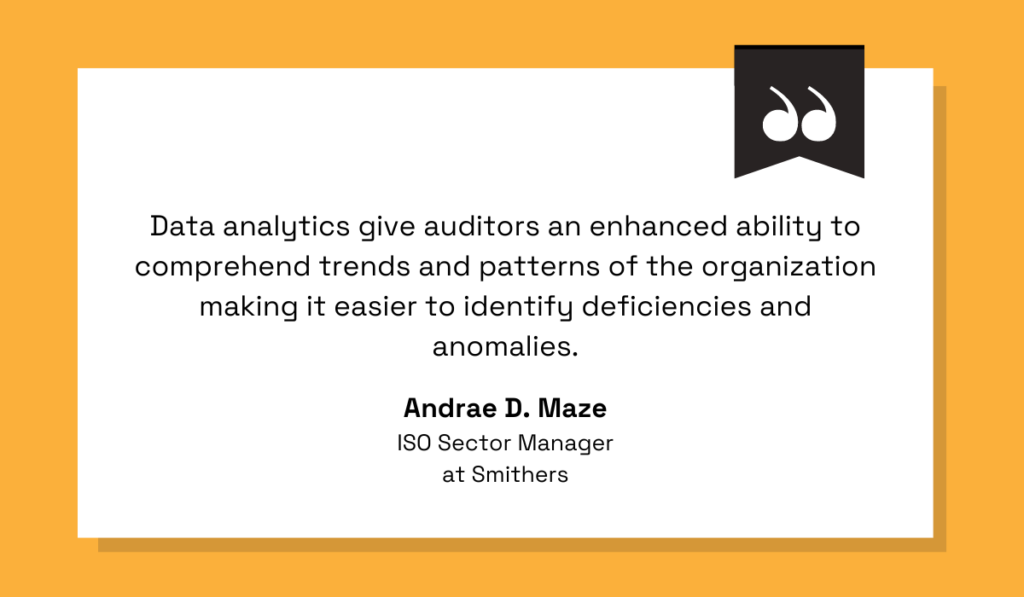
Illustration: Veridion / Quote: Quality Magazine
Big data platforms like our Veridion can also be incredibly helpful in addressing this challenge.
Veridion is a comprehensive database of global suppliers, providing up-to-date information spanning from firmographic details to insurance data, product specifications, certifications, and ESG criteria.
What’s more, Veridion can alert you to any changes in supplier activities, ensuring that you always have the most accurate information available.
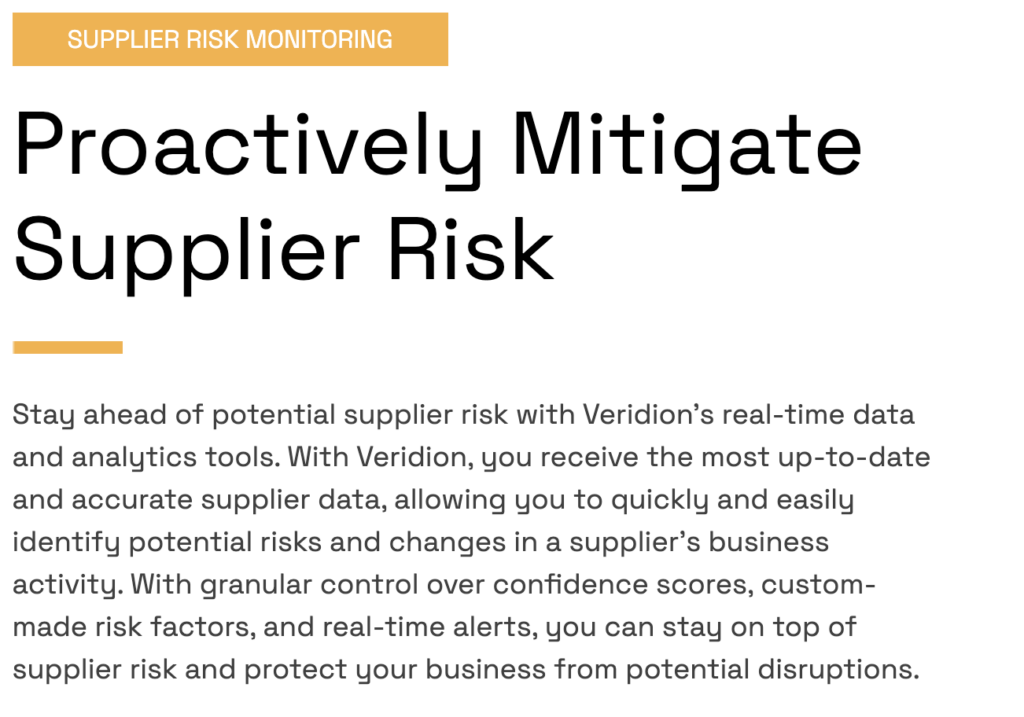
Source: Veridion
With dynamic data solutions like these, you can streamline your procurement processes, ensure compliance, and ace your procurement audits every time.
You’re probably no stranger to the challenges of limited resources—time, budget, and expertise.
After all, to conduct an audit, you need time, people, and money.
And yes, sometimes, juggling these constraints while striving for thorough audits can feel like navigating a maze.
But fear not, as you can overcome this challenge, too.
Let us tell you what we have in mind.
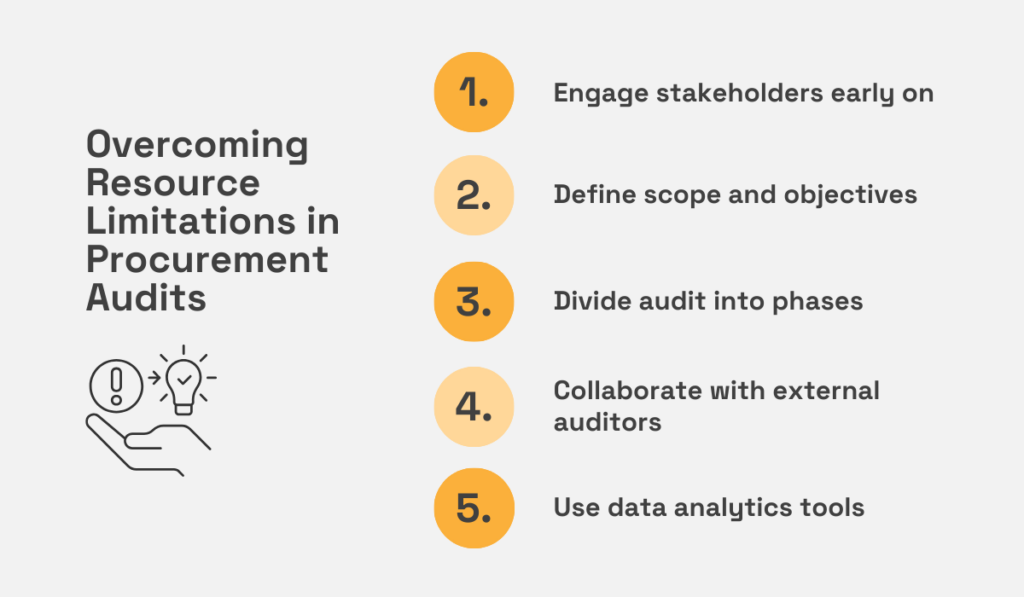
Source: Veridion
First and foremost, you don’t have to audit the entire (complex) procurement process all at once.
Instead, as we already mentioned today, you can engage stakeholders early on and, together with them, pinpoint high-risk areas and address their most pressing concerns first.
Based on these insights, you then define scope and objectives.
This lets you focus your limited resources where they matter the most and still maximize audit value.
Then, you can also divide the procurement audit into phases and further allocate resources this way.
Another constraint you may face is expertise limitations.
At times, your team may encounter situations where their knowledge or experience falls short.
This is where collaboration with external auditors becomes invaluable.
Partnering with specialized audit firms or consultants supplements your team’s capabilities, ensuring that no aspect of the audit goes unaddressed.
Finally, if time is the limit, this is where data analytics tools come in handy.
These tools analyze large datasets in mere minutes and flag anomalies and mistakes, saving you valuable time.
Even procurement automation software with data reporting capabilities can speed up the process and solve the time challenge.
So, while resource limitations may seem daunting, remember that with stakeholder engagement, collaboration, and technology-driven solutions, you can conquer these challenges and ensure the success of your procurement audits.
The ever-changing regulatory landscape—it’s like a game of cat and mouse, isn’t it?
Just when you think you’ve got everything figured out, new laws, regulations, and compliance requirements come into play, throwing a curveball your way.
Take, for instance, the regulations governing food, drugs, and cosmetics manufacturing—the Good Manufacturing Practices (GMP).
These standards are constantly shifting.
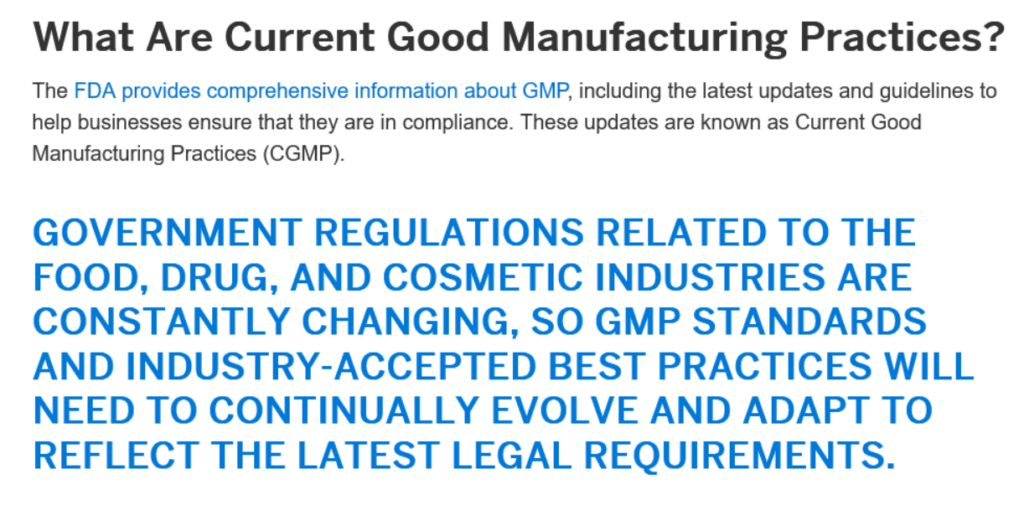
Source: American Express
If you’re in food, drugs, and cosmetics manufacturing, your processes must align perfectly with GMP standards and industry best practices to ensure compliance with the latest legal requirements.
That means your procurement and choice of suppliers must align, too.
Anything less, and you’re risking regulatory penalties, product recalls, and a hit to your reputation.
So, how do you stay afloat in this sea of regulations?
The key is agility—keep your procurement policies and procedures in sync with the ever-evolving regulatory landscape.
So, regularly review and update your procurement protocols to make sure they comply with the latest legal requirements and industry best practices.
Also, it would be smart to engage legal and compliance experts—both internally and externally—to decipher new regulations and assess their impact on your procurement practices.
Together, you can navigate the twists and turns of the regulatory maze and make sure that your procurement activities remain on the right side of the law.
Now, let’s talk about timing.
Sure, procurement audits may be scheduled quarterly, but when it comes to keeping up with procurement laws and regulations, that’s not always enough.
Implementing continuous monitoring and auditing processes, as well as compliance monitoring tools, will help you address compliance issues in real time, rather than waiting for the next audit cycle.
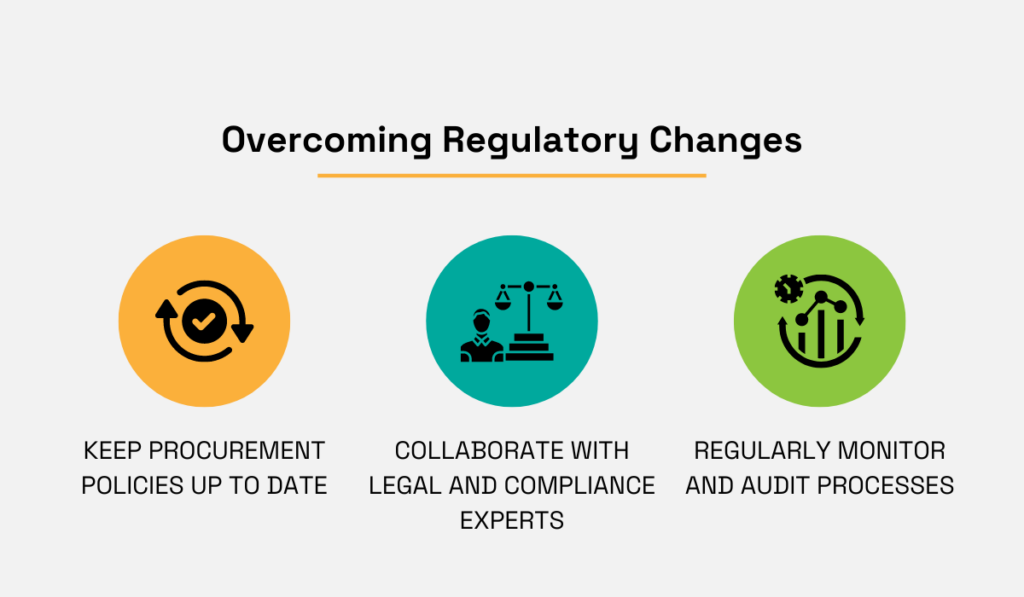
Source: Veridion
Remember, in procurement audits, staying on top of regulatory changes is vital.
You can conduct as many audits as you want, but they won’t yield much benefit if they aren’t benchmarked against relevant regulations.
As we wrap up our exploration of the five procurement audit challenges, it’s evident that obstacles are an inherent part of the process.
From the complexity of procurement processes and data accessibility to resource constraints and the dynamic regulatory environment, challenges come in various forms.
Fortunately, solutions exist to overcome them.
By embracing early stakeholder engagement, leveraging cutting-edge technology, and maintaining a steadfast commitment to continuous improvement, you can conquer every challenge.
So, do not fear the audit process.
Rather, embrace it as an opportunity to enhance your organization’s efficiency, transparency, and compliance.
With the right tools and mindset, you can conduct audits successfully, ensuring the integrity of your procurement practices and driving positive outcomes for your organization.